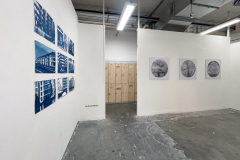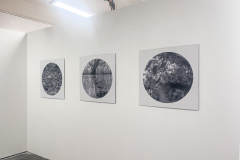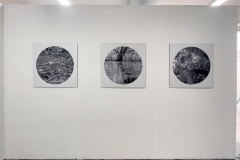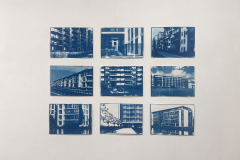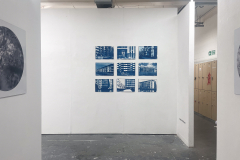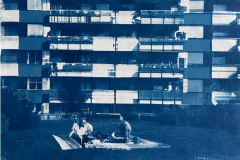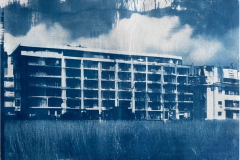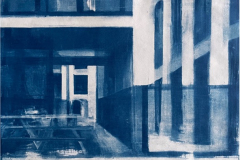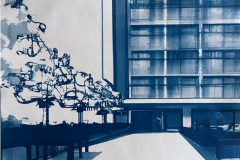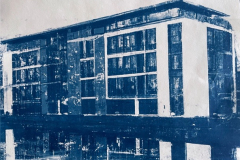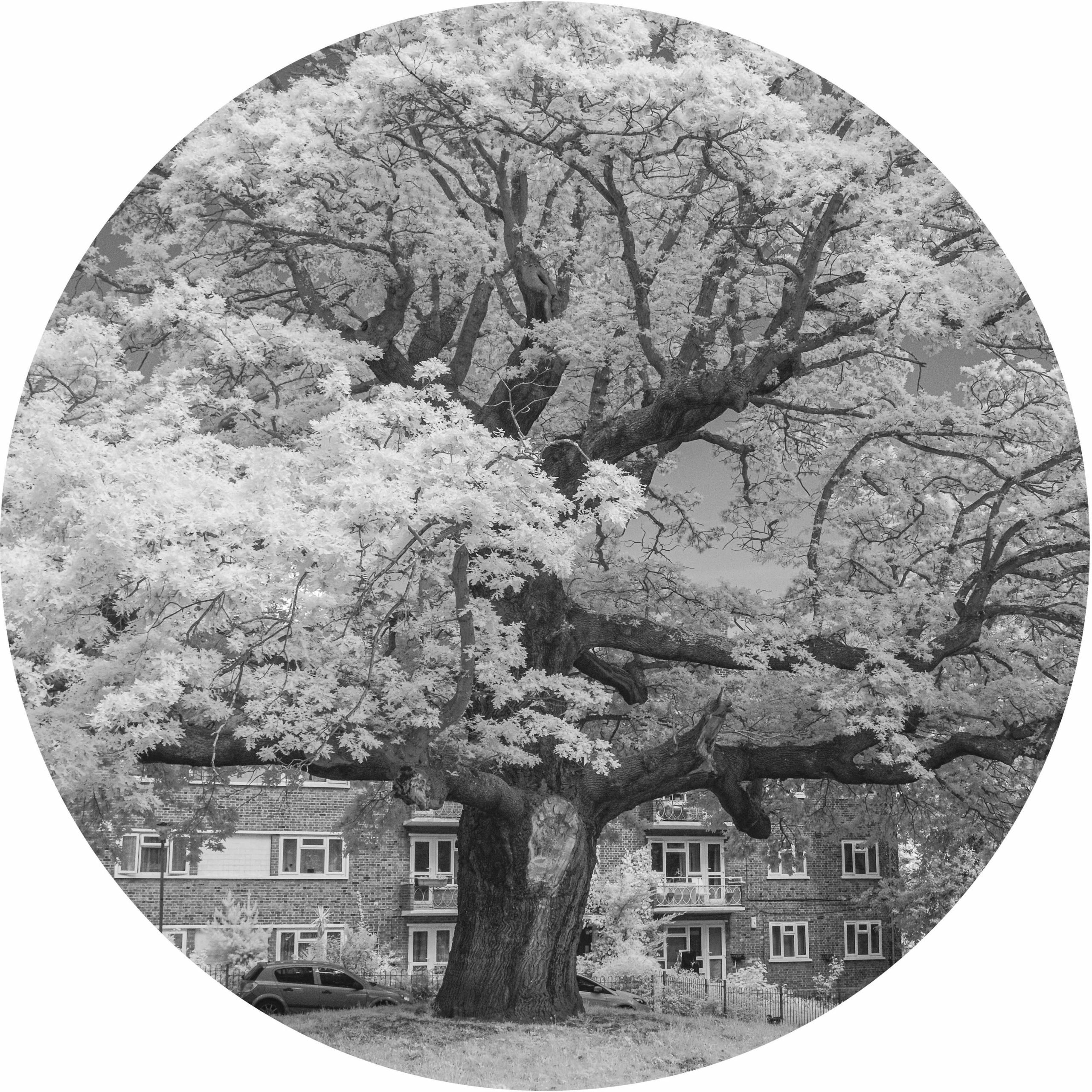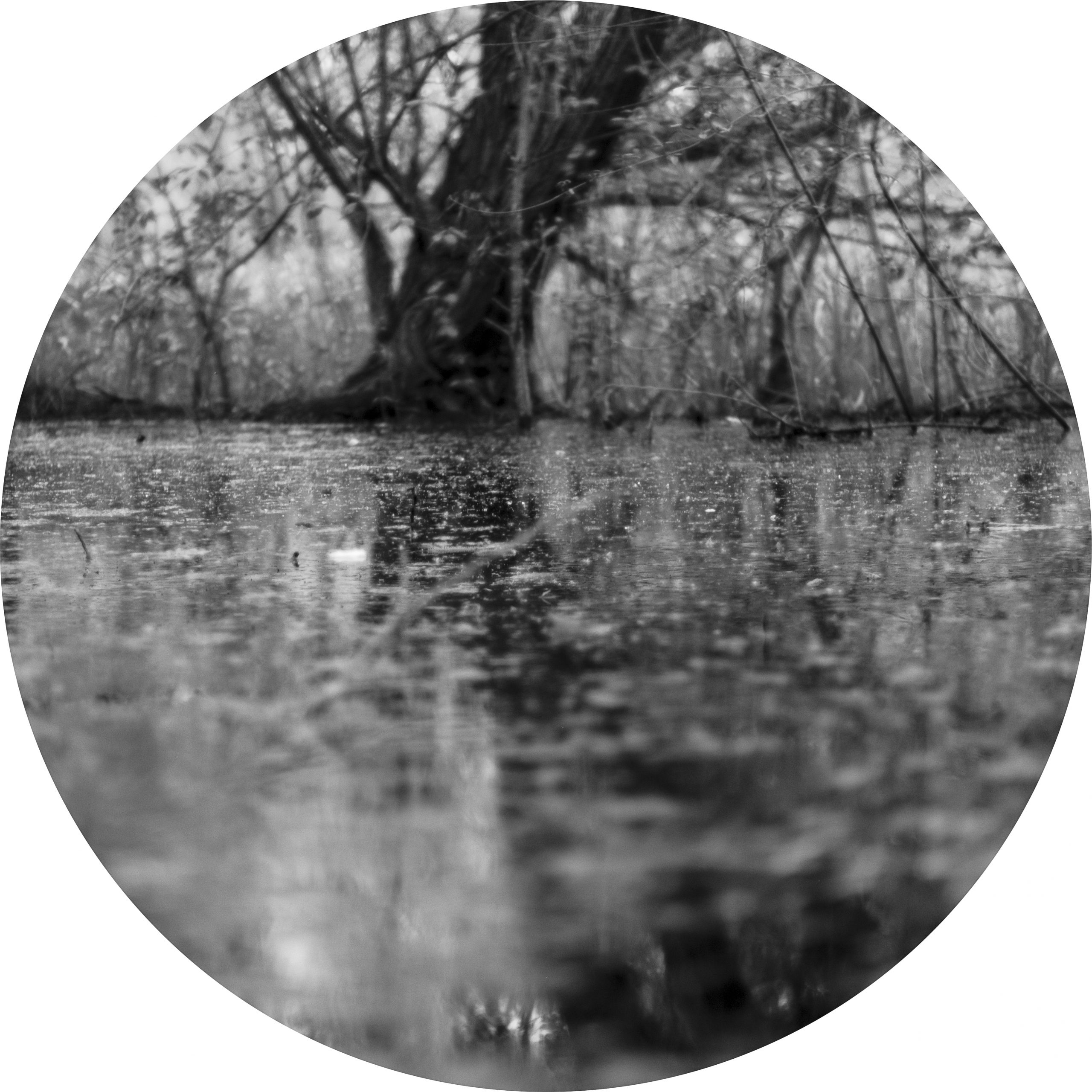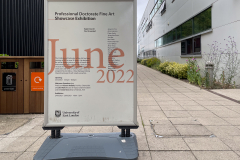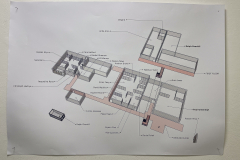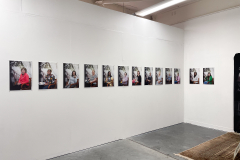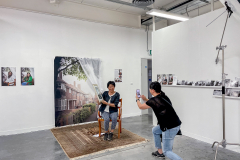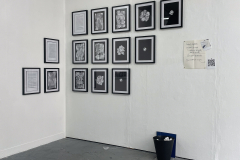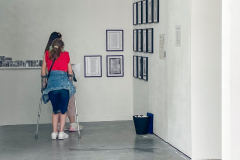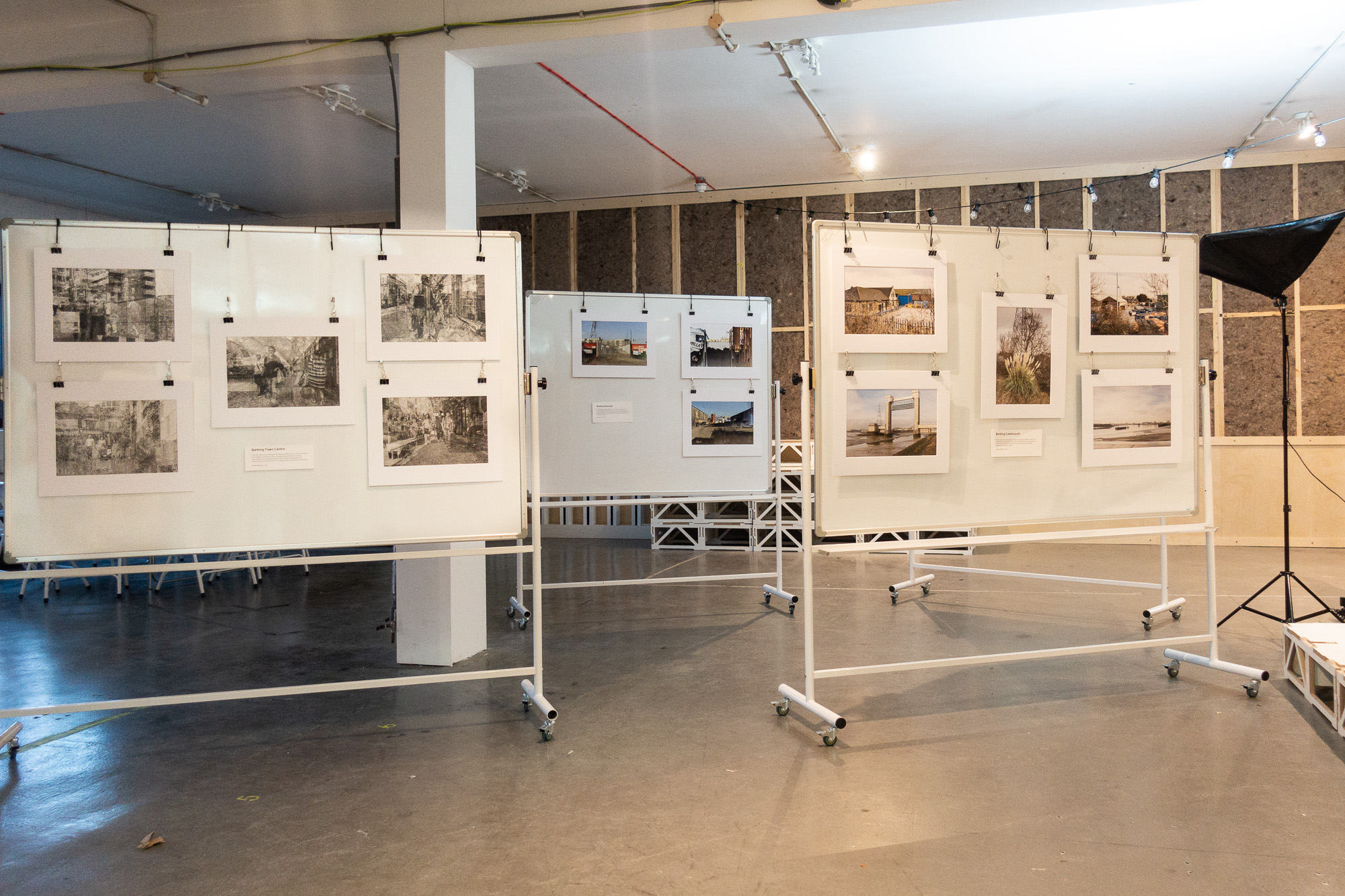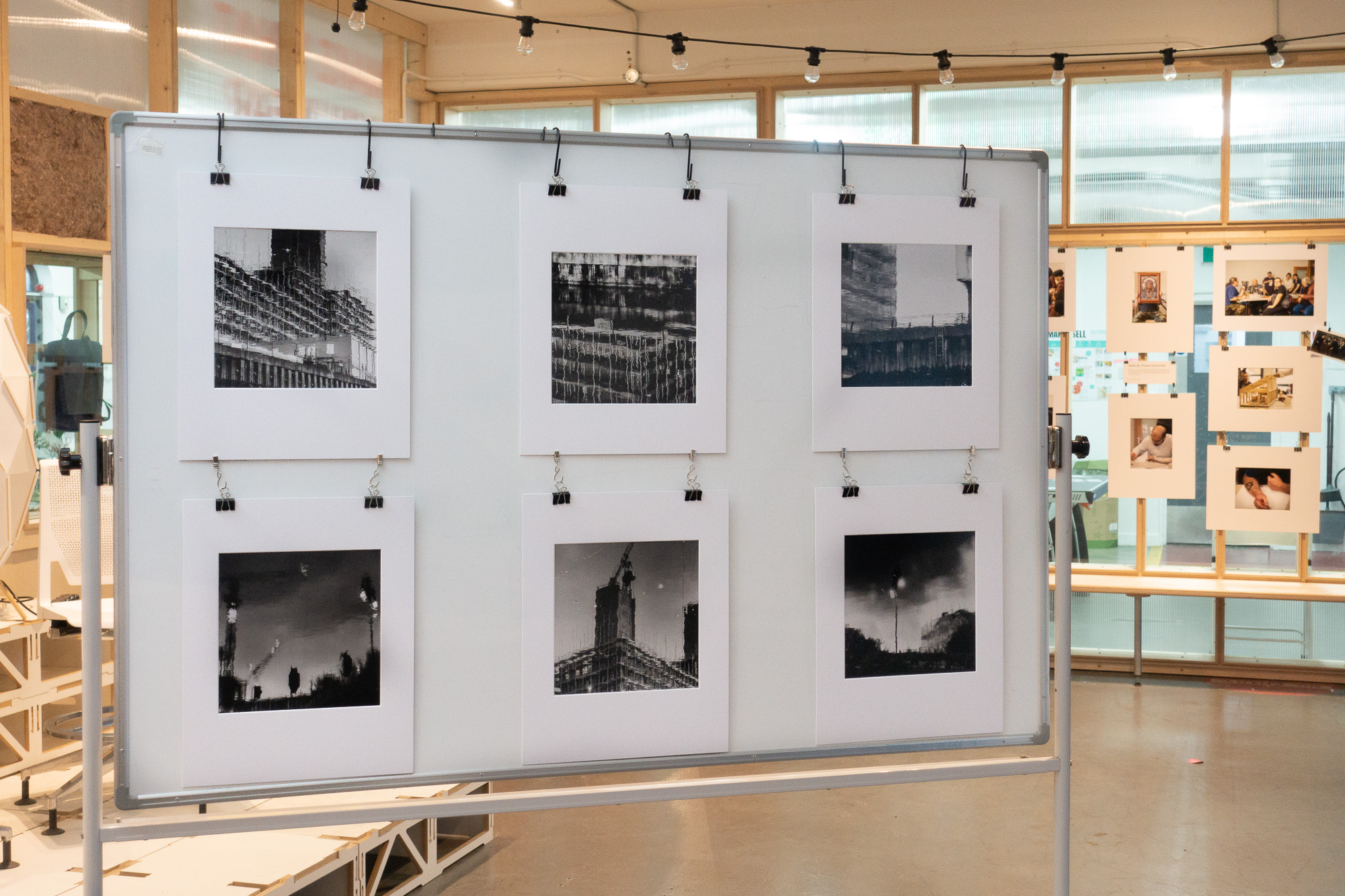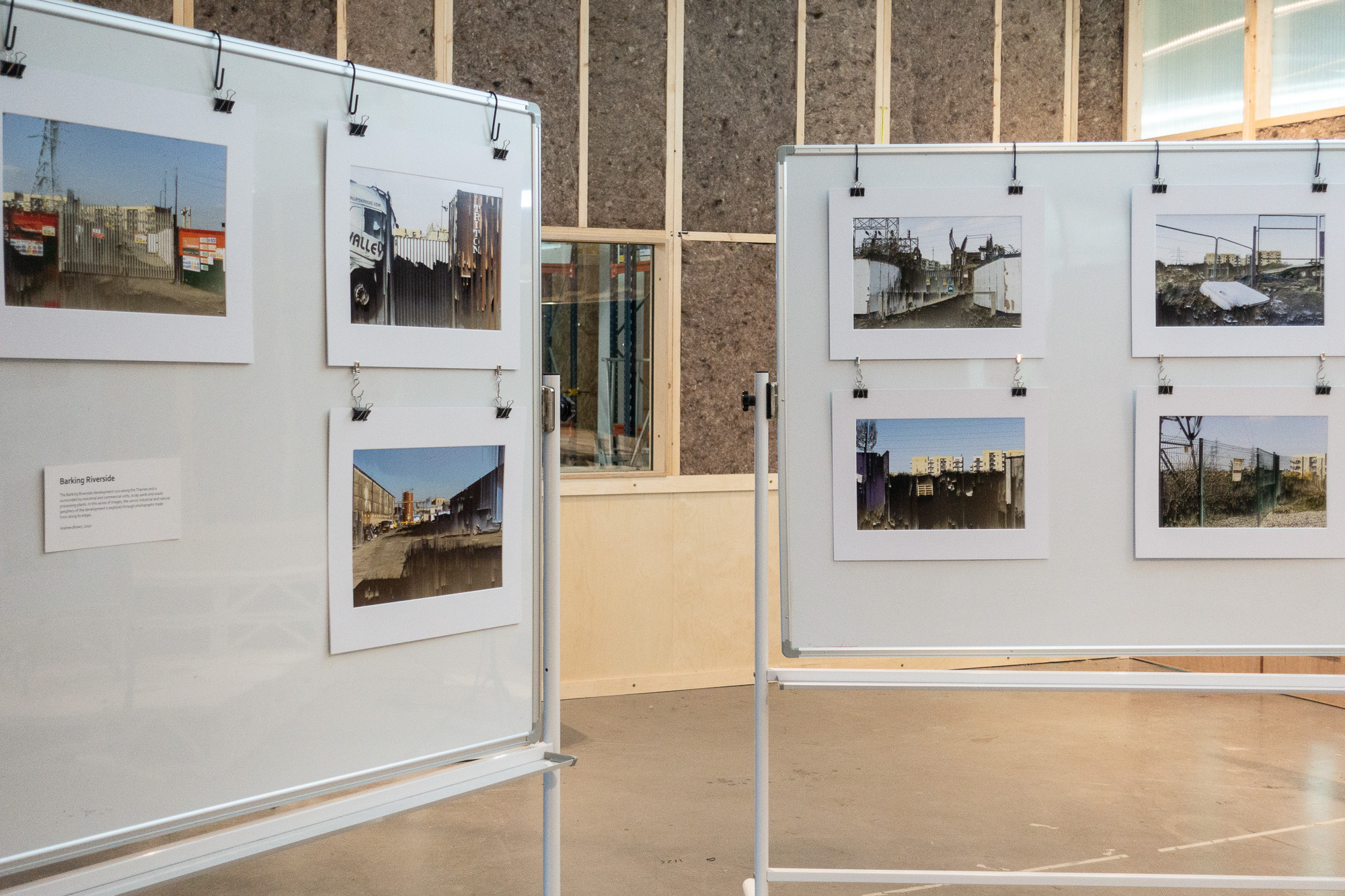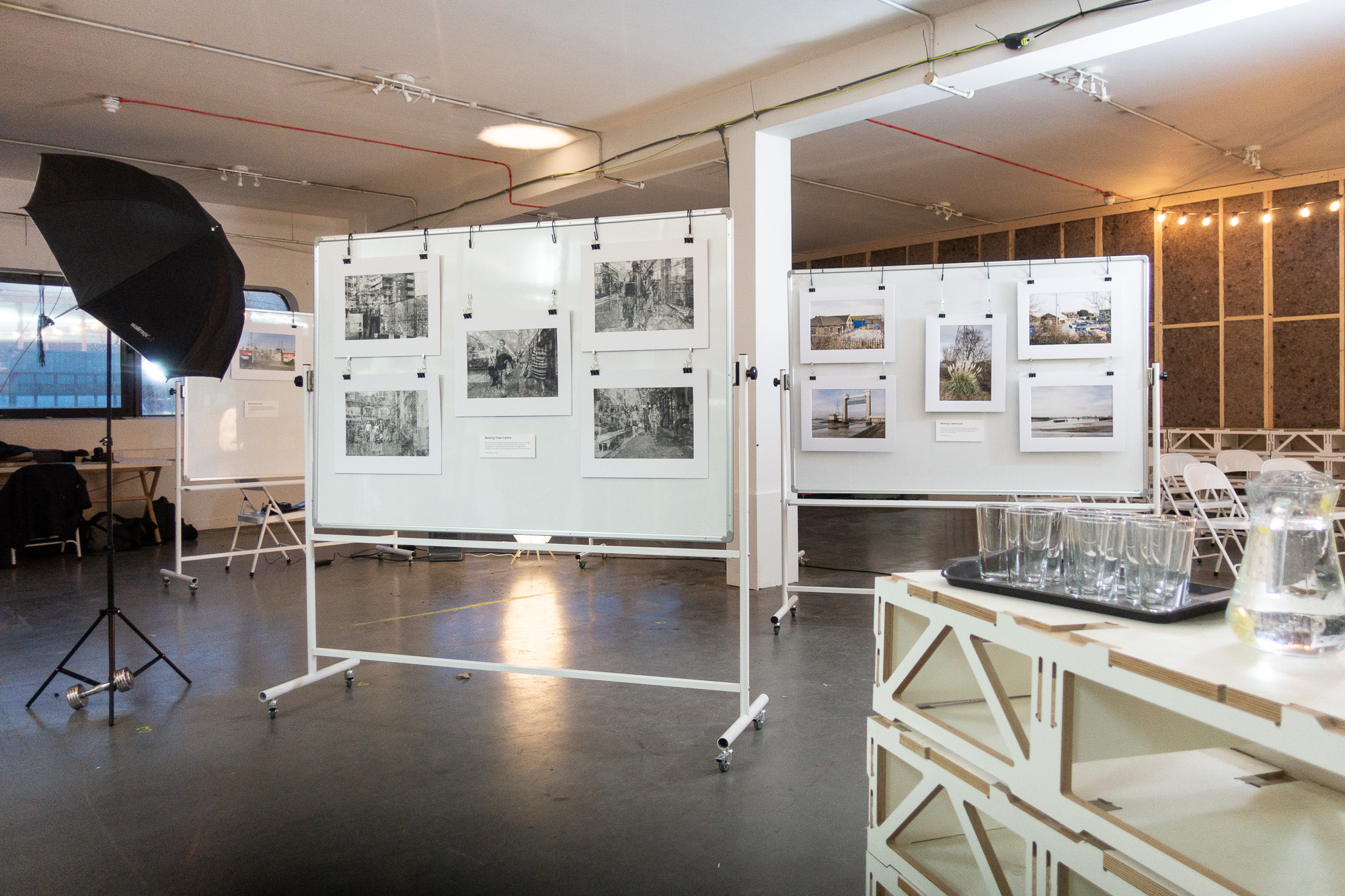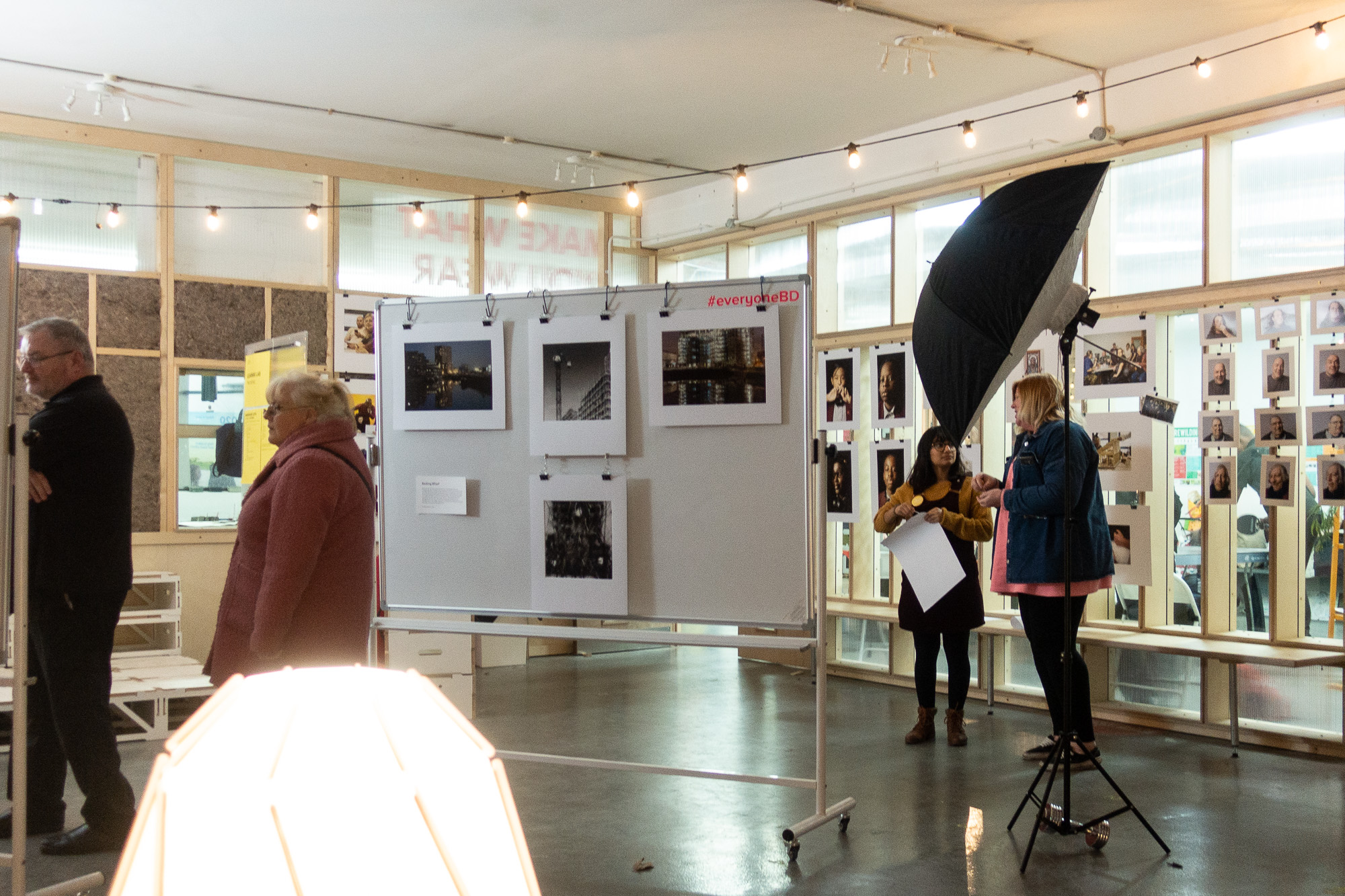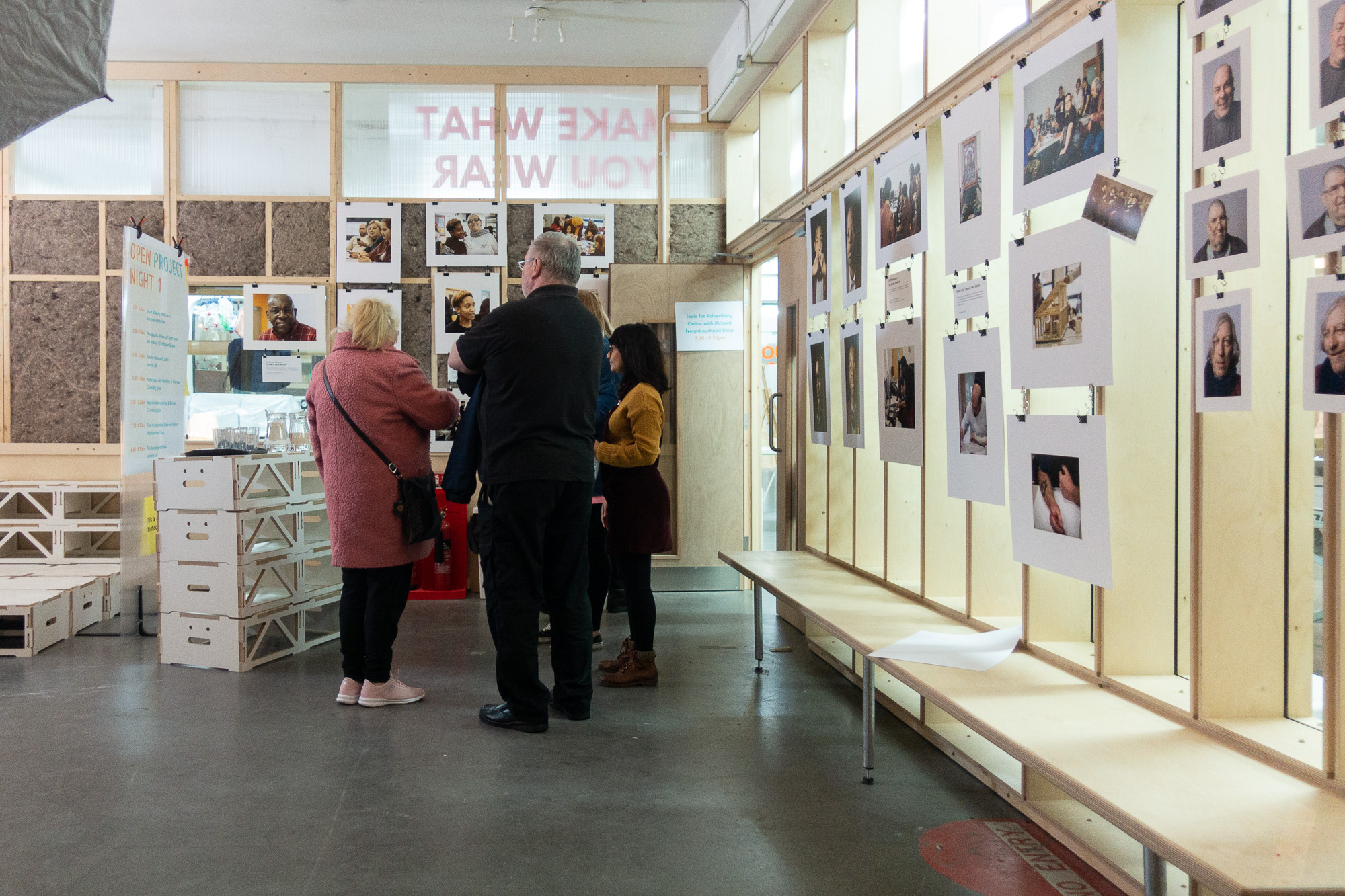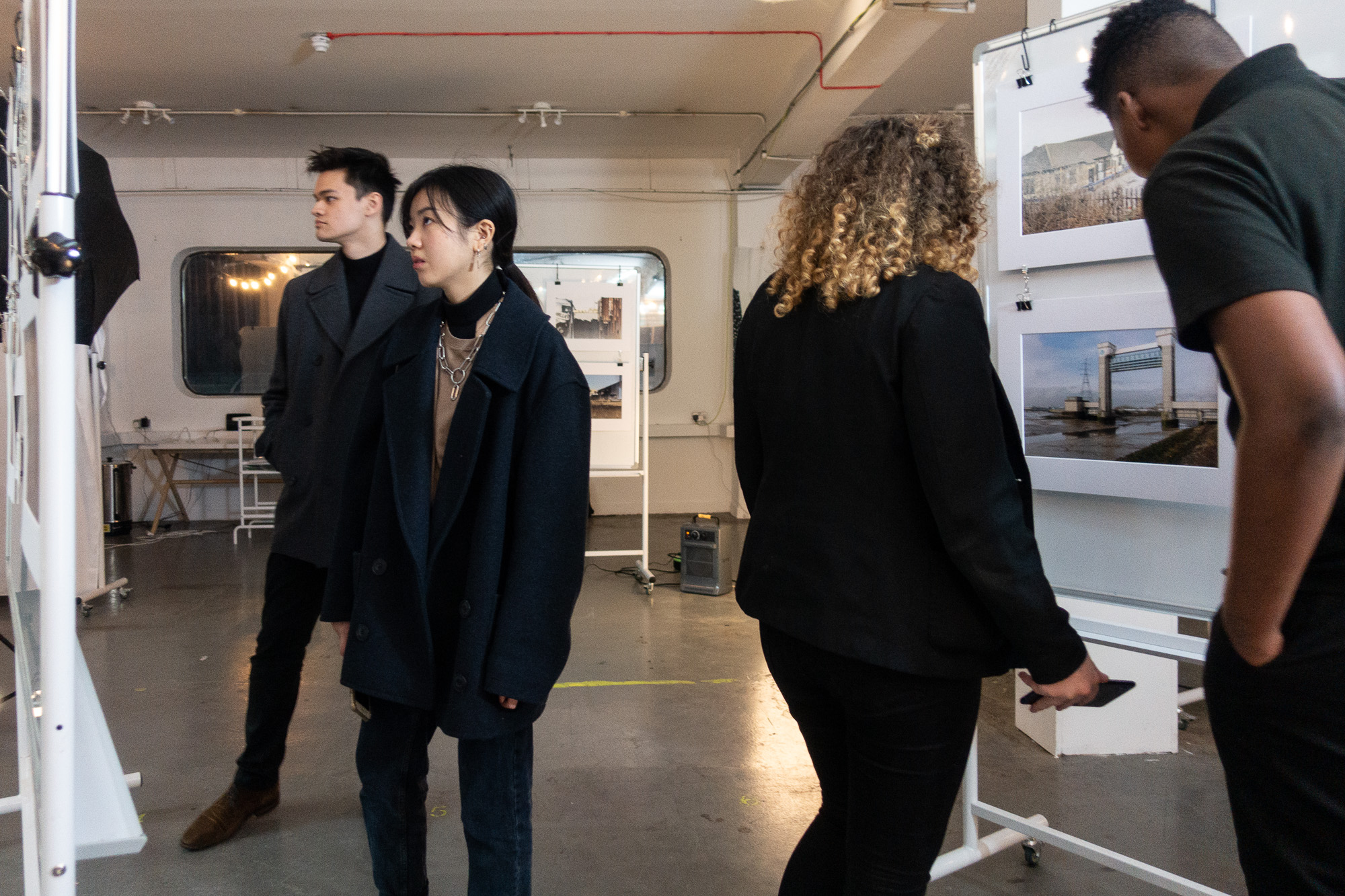DFA Showcase 2024
Permeability
The work. Spatial metaphors both help and hinder how we make sense of, and make our way in, the world. Adoption of the territorial notion of the boundary helps us to think about relationships between people, places, things and the more than human, and to speculate about, for instance, the relative strength of our sense of separation/insulation and strategies for boundary crossing. It also sends us on the never-ending quest, or contest, to determine where one thing ends and another begins. Whilst we can think about the edgelands that line the urban stretches of our rivers in terms of bounded packages of land, variously owned and consigned to specific functions, from infrastructure to recreation, or left to their own devices, these are clearly leaky and permeable spaces. So much more than the river flows through them. The three projections and soundscapes (Beneath, River Roding/A406 and Black on Maroon) explore that permeability. Time periods tumble into and intermingle with each other, substances are mutually compromised and transformed, vibrations from sources out of sight agitate us and disturb the landscape, processes from the past recast the present. In the fourth piece, an installation comprising of primative camera obscura made from cardboard boxes, plastic lenses and tracing paper, bring the outside visually into the darkened room. Permeability abounds and boundaries lose their purchase.
Comment. In an earlier project, I walked around the edges of housing developments in east London making images and field recordings, which I combined with texts, maps, historical images and other material to create portable archives to use in activities with residents. I noted the differences between what can be seen and what can be heard in the process of urban regeneration (and what cannot be seen and heard, and said and thought, and the influence on this of how experiences are mediated and knowledge constructed). In planning an Arts Council bid this year, I walked with a collaborating artist along the urban sections of the River Roding, which runs alongside and beneath several major roads and motorways in east London. She remarked that the incessant thunderous sound of the roads ‘spoiled’ her experience of the river and surrounding landscape. At the end of a difficult year, I want to take the opportunity to extend my practice to explore the idea of ‘spoiling’ in relation to time and different modes of engagement with and experience of the environment.
Research. My practice-based research explores plurality in contemporary art, through the design and implementation of a series of collaborative multi-disciplinary projects and the dissemination and analysis of the artistic work produced. Artists commonly lead double or multiple lives, often as a response to economic precariousness. At a time of disruption and transformation of established practice provoked by a succession of global challenges, this study explores the creative potential of the ability to move between multiple and diverse contexts and forms of activity, and the benefits of the critical dialogues this facilitates.
Beneath, 2024
Black on Maroon, 2024
River Roding/A406 (without fade or soundtrack), 2024
Work in Progress Seminar, February 2024
Here is the presentation given at UEL on 8th February 2024. It contains two short videos, which I’ve posted separately below. I didn’t give a WIP presentation in the Autumn term this year – I took a break from the programme for six months, before and after my mother and father died in September. Reflections on the discussion and feedback received at the seminar to follow.
WIP Feb 2024 v2
DFA Showcase 2023
Terra Privata
The prevalence of private housing developments on previously industrial sites in east London has led to a proliferation of privately-owned public spaces (POPS). These include parks and other ‘green spaces’ that are freely open to the public, but subject to any conditions the owner wishes to impose, including possible restrictions on photography. My contribution to the DFA Showcase brings together work from three series to explore three privately owned public spaces in east London.
Blueprints for a Connected Community 1-9
Nine handprinted cyanotypes from digital negatives on Canson Mixed Media paper, 42 cm x 30 cm.
Images generated by DALL-E2, ‘an AI system that can create realistic images and art from a description in natural language’ (Open AI website, accessed 29.05.23)’ from in situ descriptions of three private housing developments in east London. Prints exposed in natural light, processed in water and dried in the air in various east London locations.
Mature Stage of Life, 2023
Three 70 cm x 70 cm UV cured pigment prints on dibond
There are no mature trees on the three developments. These infra-red photographs are of the nearest ancient or veteran tree to each place, identified using the Woodland Trust Ancient Tree Inventory. ‘Veteran trees are complex, support biodiversity, have cultural and heritage value and provide continuity in a changing world. They are usually in their second or mature stage of life and bear ‘the ‘scars’ of age such as decay in the trunk, branches or roots, fungal fruiting bodies, or dead wood’ (Ancient Tree Guide no.4: What is an ancient tree?, The Woodland Trust, 2008: 5).
A New Kind of London Living, 2023
Three 70 cm x 70 cm UV cured pigment prints on dibond
Late nineteenth century photographic emulsions are sensitive to just ultraviolet and blue, and unable to register chlorophyll, only perceptible in the near infra-red portion of the electromagnetic spectrum. This gives the landscape a muted and distant allure, producing images that supported the spurious colonial notion of ‘terra nullius’. Present day developers adopt a similar position, claiming to bring new value to spoiled places, for instance ‘restoring a sense of ecological balance to this once industrial site’. The images in this series are made at the edges of each of the three developments with a sensor that simulates nineteenth century emulsions.
DFA Showcase 2022
Please Show Your Working
Thames View Women – Platinum Jubilee (2022)
13 colour giclée prints, 33 cm x 48 cm
(Pam, Yolanda, Lilyana, Chris, Fatuma, Ruby, Claire, Brenda, Natalie, Carole, Tia, Josie, Susie).
3 colour giclée prints, 21 cm x 30 cm
(Anthony, Aaron, Bayley).
100 monochrome prints, various sizes.
Portable studio installation, mixed media.
Research Exploitation (2022)
Three sets of five monochrome prints, 21 cm x 30 cm, framed.
(Untitled #87, Rumpled #87, Ripped #87, Jumbled #87, Crumpled into a ball #87; Untitled #88, Rumpled #88, Ripped #88, Jumbled #88, Crumpled into a ball #88; Untitled #89, Rumpled #89, Ripped #89, Jumbled #89, Crumpled into a ball #89).
Waste-bin with thesis pages crumpled into balls and thesis cover.
A3 sheet with calculations and QR code link to animated gifs.
Last MA post
Just looking back over the posts that I have made over the FMP period (50 FMP posts in total, 250 over the course of the MA since the first MA post) as I prepare to submit my Final Major Project pdf and Critical Review of Practice . I’ve stuck pretty much to the intention expressed in the first of these FMP posts, ‘to be more tightly focused on my own project … so I think that means shorter and more speculative items, with occasional longer posts to take stock and pull things together’.
The development of the FMP is effectively mapped, from the initial proposal, through revisions in the process of doing the work through to the adaptations that have had to be made to accommodate the covid-19 measures implemented over the past couple of months. Alongside this I have discussed some the the emerging influences and new directions for the work, such as the use of pixel-sorting and moving between analogue and digital images, and the paradoxical influence of Stephen Gill’s work. Being awarded a place on the London Creative Network artist development scheme has been important, and the influence of events held has been documented (though, sadly, meetings with mentors are now online, but still useful). There’s a record of some of the things that haven’t, in the end, been possible, such as the plan to exhibit work in public spaces, but the exploration of portable exhibitions did prove fruitful in the circumstances. The CRJ has provided a useful means for documenting presentations and exhibitions, and aspect of the work that haven’t featured in the final FMP, for instance photographic work with community initiatives like ShedLife. Also documenting exhibitions and events that have been influential. And galleries presenting my visual work as it has developed.
There is a lot that isn’t here, however. Particularly over the past month, when the primary focus has been on production of the FMP pdf and CRoP. In particular, I haven’t been able to document the feedback that I have received on my work, including a series of invaluable online discussions with other photographers working in similar areas. I have also been discussing ways of developing the work after the FMP, for instance with Kathrin Böhm & Levin Haegele, with Tamara Stoll and with Noel Moka’s Park Society. That’s for another day, and another place …
Soundscapes
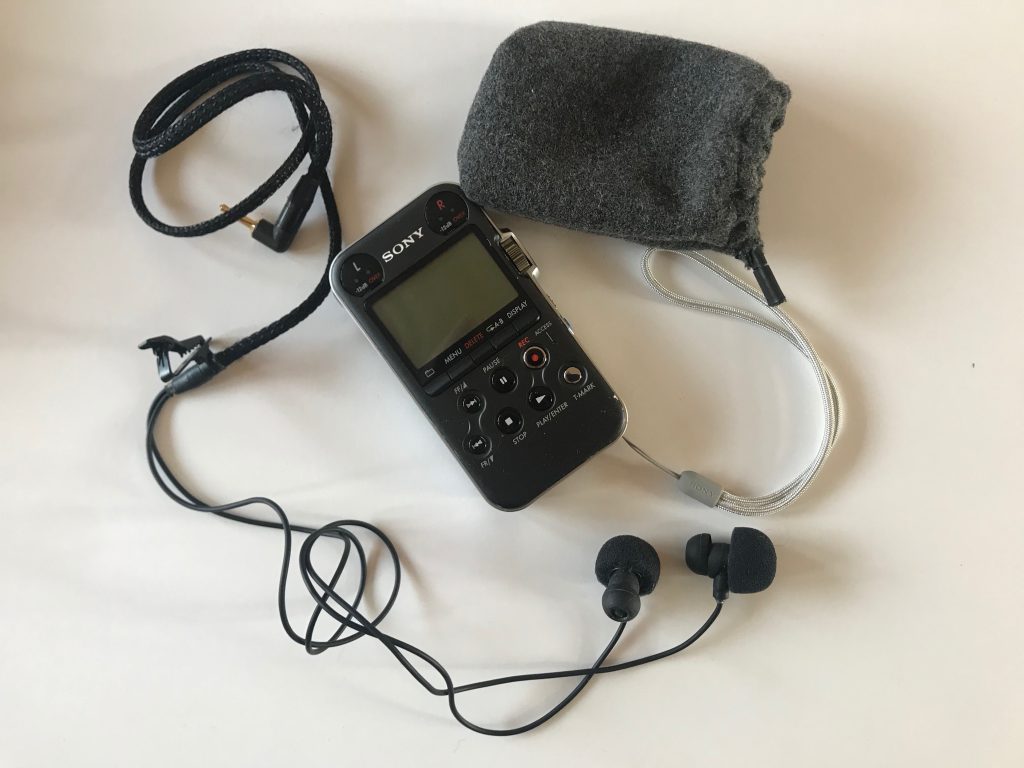
Alongside the visual and textual contents of the boxes, I have provided a soundscape for each of the three settings. ‘Soundscape’ is a term first used by composer Murray Schafer (1969) and subsequently used widely, and variably, by scholars in the sonic arts (see Kelman, 2010). Here I am using the term as a sonic correlate of ‘landscape’: these are binaural field recordings that provide a sense of the place, which contextualise, and are contextualised by, the images and other material. As Labelle (2018) has noted, street sound is leaky and transgressive. In all three cases, one can hear what cannot be seen in the images. And, in all three of the recordings, the human and the non-human, the constructed and the natural are inter-woven, as they are, in different ways, in the images.

I have uploaded the soundscapes to the web and in the pdf and in the archive boxes I have put a QR code for each setting that will download the file and an audio player to a browser when scanned.
References
Kelman, A. 2010. ‘Rethinking the Soundscape: A Critical Genealogy of a Key Term in Sound Studies’, The Senses and Society, 5, pp. 212–234.
LaBelle, B. 2018. Sonic Agency: Sound and Emergent Forms of Resistance. London: Goldsmiths Press.
Schafer, R.M. 1969. The New Soundscape; A Handbook for the Modern Music Teacher. Don Mills, Ont.: BMI Canada.
Bespoke archive boxes
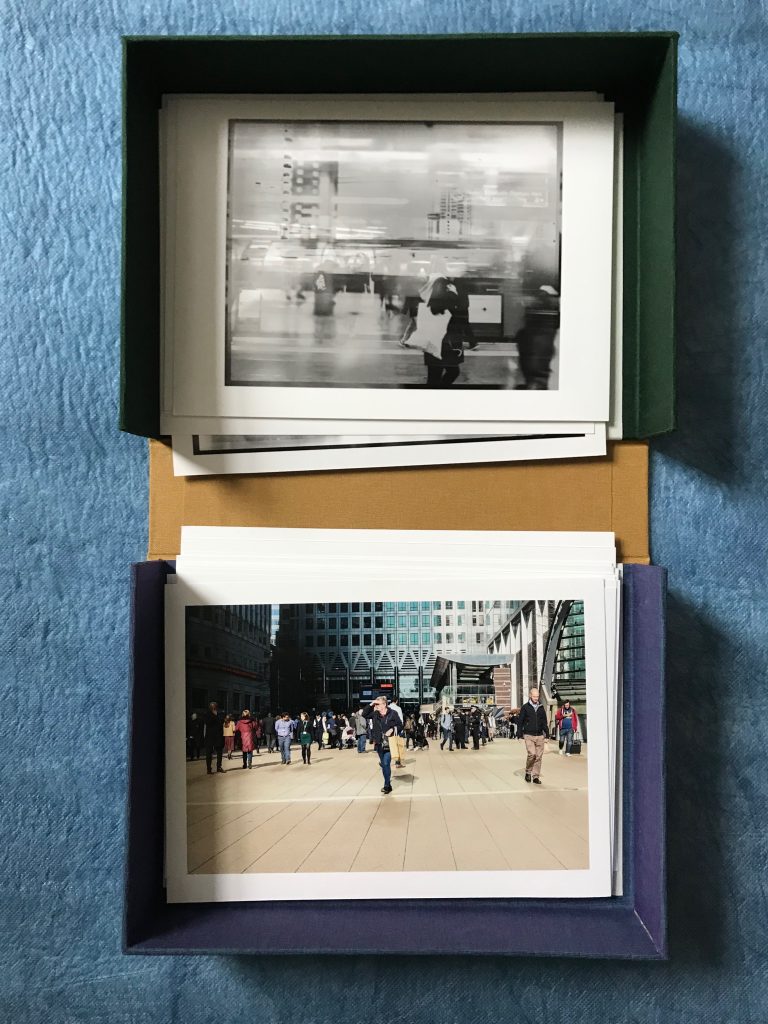
The clamshell box (above) that I made at a London Centre for Book Arts workshop last year has done good service as a portable portfolio, and prompted the idea, at the Falmouth portfolio review, of incorporating some form of physical archiving, and making archive boxes, as part of my final major project. After a couple of days of making therapy, below are the three A4 boxes that I’ll use for the three collections.

Although I’ll not now have an opportunity to use them before the end of the MA programme, I have also put together a set of large mounted prints, stored in an archive box (I didn’t make this one) for portability, for pop-up exhibitions.

Adapting to the Covid-19 measures
Completion of an MA programme seems relatively trivial in the light of the pandemic crisis and its repercussions, but, in order to get the work done by the due date, I have to think through how I will adapt my project plan to these new circumstances.
The work in Singapore that I had scheduled for early March had to be cancelled (maybe to be rescheduled for September) and, in order to safeguard my mother, I had to cancel my trip to Falmouth to for the face to face event (workshops, portfolio reviews, conference). The following events and activities relating to my project have been cancelled:
- 25th March: Memory and Archiving Workshop (Everyone Everyday, Barking)
- 9th April: Trade School on Community Archiving (Participatory City Warehouse, Barking)
- 18th April: Open Table Exhibition (Everyone Everyday, Barking)
- 29th April. Presentation to the London Prosperity Board.
In addition, the weekly workshops and meetings with the Shed Life group and at Greatfields School (and the planned exhibition) have been postponed for the foreseeable future. It is unlikely that any of this work will take place before the submission date for the final project.
The cancellation of the two archiving workshops means that I will not have the opportunity to work further on the contents of the archive boxes with residents, and therefore will not be able to include resident material in the collections nor get further feedback from them on my own work. We have looked at and discussed my images at earlier workshops (likewise with the students at Greatfields and other project participants over the past two months), but I haven’t formally recorded this. The cancellation of the exhibitions means that I will not be able to present this work to a wider audience as planned, and get feedback from those events. The presentation to the the London Prosperity Board would have provided an opportunity to reflect on the project as a whole and reflect on the wider implications of this way of working, and in particular the contribution of the arts to multi-professional activity and interdisciplinary enquiry, with policy makers and practitioners. It is possible that this meeting will take place online, though this does not allow people the opportunity to handle the materials (the tactile and material aspects of the collections are important, for instance relating to the material used for the prints, and the handmade books) and take part in the planned activities.
I want to be able to complete the project and submit on time despite the extraordinary circumstances, and the increasing volume of other more pressing concerns as the pandemic develops and wider consequences are felt. That means adapting planned activities from this point onwards and rethinking what I submit as a final outcome. At this point, it looks something like this:
- For the final PDF, submit a selection of my own images from three series (one focusing on Barking town centre, one on the wharf area and one on Riverside), with short passages to contextualise the work.
- Compile the three collections for the archive boxes for each of the areas (my own images, including those in the pdf, handmade books, maps, documents, historical images) and make the boxes to house these.
- Edit and upload soundscapes from each area.
- Make and upload videos of the contents of each box.
- Pull together and represent public engagement (pop-up exhibitions, workshops and presentations) to date.
- Design and compile the draft PDF.
- Send out the PDF to a small group of people for comment (to meet the requirement for reflections on the work by other practitioners, which would have been met through the events that have been cancelled).
It will be a challenge to place this material in the context of the wider project. Longer term, I need to think about how to develop this work in a (hopefully) post-pandemic world. The materiality of what I am producing has been an important part of the work (having prints of different sizes and media to handle and discuss together, for instance, and the pop-up exhibitions). This does not translate directly to online environments, and workshops will be challenging if social distancing continues for an extended period of time.
Open Project Night Exhibition
Participatory City Warehouse, Barking, 4th March 2020
An opportunity to bring together a selection of my community focused work with work on various housing developments around the borough (town centre, wharf, Riverside and Creekmouth) in one pop-up exhibition. A total of 64 prints, zoned with the community work at the edges around the entrance, and the FMP work on display boards in the centre. Used pins, hooks and clips with 500x400mm mounted prints as in previous exhibition, and was able to set it up and take it down rapidly. I’ll include something about these rapid and portable pop-up kits in the FMP submission.
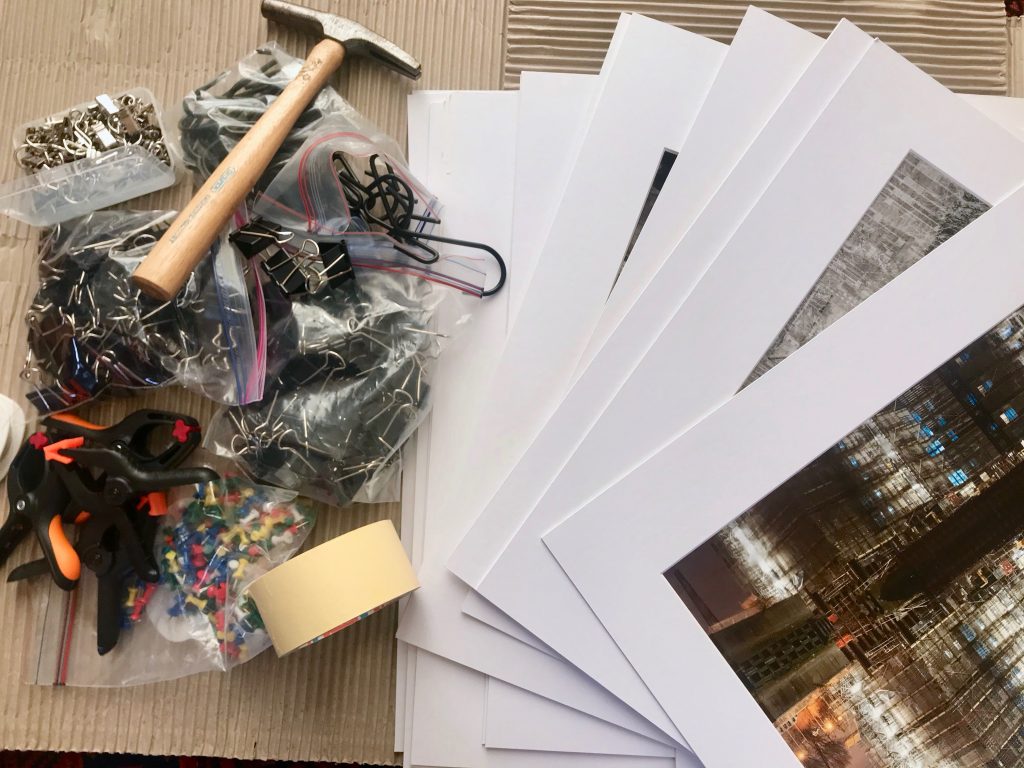
The lighting was particularly challenging, so I need to think about how to handle this in different settings. I also set up a a ‘Photo Booth’ which generated some interest.
There were a number of other events running during the evening, which brought a variety of local people into the exhibition. It was good to be able finish the evening with a showing of Noel Moka’s film Pathways (2019), and to discuss themes related to my own work with Noel, and the possibility of doing some work together in the future.











